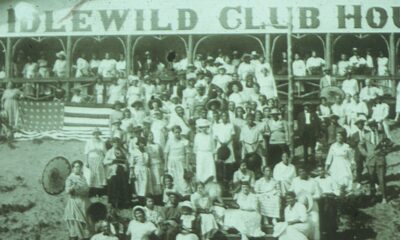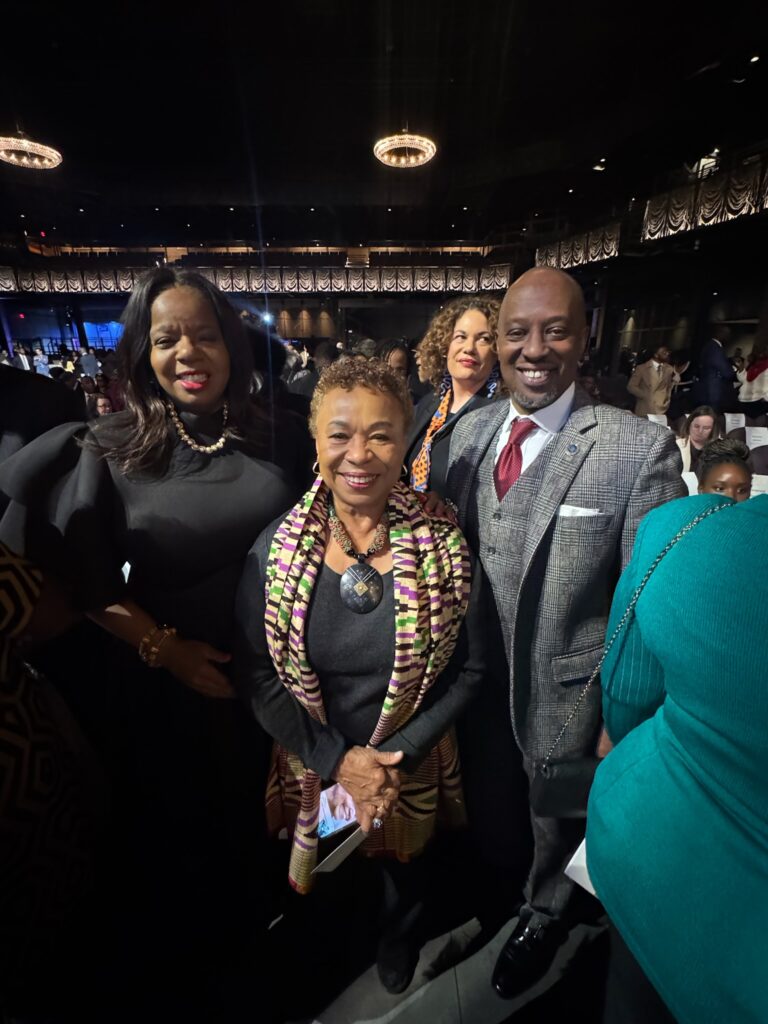Ranking in the top ten on a national list may seem like a good thing — depending on the list, of course. In 2013, two researchers crunched the 2010 U.S. Census numbers and placed St. Louis at number six among the nation’s most segregated cities. Business Insider then mapped the data.
MORE: The 25 Most Segregated Cities In America
It may not come has a surprise then, that the St. Louis American continues to serve as a “must-read” for African-Americans in the metropolitan area that sits astride the Missouri-Illinois border and stretches across 17 counties in both states.
Greater St. Louis population: 2.7 million (U.S. Census, 2010)
City of St. Louis population: 320,000 (U.S. Census, 2010)
According to Certified Audit of Circulations (CAC), which tracks newspaper circulation, the St. Louis American has a weekly print run of more than 70,000 copies. The paper’s website boasts 845 distribution points in 74 zip codes in the region — including stores, street boxes, college campuses and corporate offices.
The newspaper’s website provides a distribution map showing those points of sale: across a region that extends from East St. Louis, Ill. to the far western and southern suburbs of (mostly white) St. Louis County. The closer to the city and the northern suburbs one gets, the more places one can find the St. Louis American.
The weekly paper comes out every Thursday. Of course, readers anywhere can find the online version of the newspaper anytime. It editors boast updates to its website “2-3 times a day.” And, like many publications, it offers an “e-edition” of the weekly newspaper itself that readers can page through on their computer or tablet.
The St. Louis American: Still standing
There was a time when St. Louis boasted three black newspapers: the St. Louis American, the St. Louis Sentinel and the St. Louis Argus. St. Louis native Linda Lockhart remembers her family most often reading the Argus, which she describes as “strongest of the three” at the time. A journalist with four decades of experience, Lockhart grew up with the local and national black press.
“The St. Louis Sentinel offered a more conservative voice, but was also important to the community,” Lockhart recalled. “We also had Jet and Ebony magazines in our home, so I was always accustomed to reading publications such as these.”
The Argus and Sentinel survive today in memories and historical archives. By contrast, the American can now tout several points of pride:
The only local African-American newspaper continuously published since 1928
The longest continuously published weekly newspaper in the St. Louis area
The single largest weekly newspaper in the entire state of Missouri
Lockhart, outreach specialist at St. Louis Public Radio, said the sole survivor of the city’s black press continues to play a “tremendous role.”
“The American is where people can go to see stories of success and opportunity that exist in the black community, but are rarely displayed in the so-called mainstream media,” she said. “The daily newspaper in town (the St. Louis Post-Dispatch) focuses its main headlines on government and politics, or what the developers and corporations are doing.”
Read more: History of the St. Louis American
Robust and relevant
Compared to many online versions of black newspapers, which rely on wires and syndicated content to keep current, the St. Louis American’s website is rich in local articles and features, including video, as well as national news.
Both the online and print versions provide original, local coverage from politics and business to health, commentary, society pages, local entertainment and religion — including a directory of local churches. There are plenty of photos, showing the faces of black St. Louisans — in both the print and digital versions of the paper.
The St. Louis American has built a strong reputation for covering high school athletics as well as college and professional sports. Its video section includes sports roundups and commentary from local reporters. Advertisers appear to like the audience the newspaper delivers: Readers can see digital and print ads from major companies and hospital systems as well as small businesses.
At a time when newspapers are struggling to remain robust and relevant, Lockhart believes the St. Louis American is holding its own.
“In the American, readers can see stories about young, professional African-Americans; successful programs in schools and in the workplace,” she said. “The editorials advocate specifically for causes and concerns that have direct impact on the lives of African-Americans. The business and entertainment sections also share stories that are rarely seen elsewhere.”
Lockhart, a former editor on the national and international news desk at the St. Louis Post-Dispatch, said the black press continues to play a vital role.
“Black-owned news organizations, whether newspapers, online sites or broadcast networks always have the opportunity to tell stories from a vantage point that white-owned and operated organizations can’t or won’t do,” she said.
“Black-run news organizations are important for everyone, not just the black audience. White readers and viewers, and people of other ethnic backgrounds can learn much about their community as a whole, by getting their news and information from organizations such as the American.”
More about the St. Louis American:
Owner, Publisher & Executive Director: Donald M. Suggs
Address: 2315 Pine Street, St. Louis, MO 63103
Contacts: Phone: (314) 533-8000


 Black History5 years ago
Black History5 years ago
 Black History6 years ago
Black History6 years ago
 Black History4 years ago
Black History4 years ago
 Black History5 years ago
Black History5 years ago
 Black History5 years ago
Black History5 years ago
 Black History6 years ago
Black History6 years ago
 Black History9 years ago
Black History9 years ago
 Black History5 years ago
Black History5 years ago

















